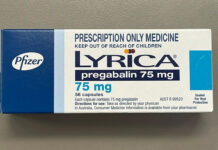NSW Health has issued an alert following a stream of newborn and infant presentations with symptoms of anticholinergic syndrome.
Colic preparations containing the toxic belladonna plant are the suspected culprit.
Other jurisdictions have reported similar incidents, with Queensland Health also issuing an alert after two infants presented to a Brisbane metropolitan hospital with suspected belladonna toxicity.
So what do pharmacists need to look out for? Australian Pharmacist delves into the signs and symptoms of colic, the recommended treatment options, how anticholinergic syndrome manifests and advice for struggling parents.
How, and when, does colic present?
Colic is defined as repeated, unexplained, inconsolable episodes of crying that persist for more than 3 hours per day, with parents unable to comfort their children.
The crying typically onsets suddenly at a similar time each day – more frequently occurring in the afternoons or evenings.
Other symptoms can include:
- balled fists and arched back
- curled legs over the stomach, which can be hard or swollen
- gas passage as the crying stops (may be coincidental)
- red, grimacing face, which turns deeper red after prolonged crying.
Colic tends to peak when infants reach 6 weeks of age, and typically resolves by the time the child is 3–6 months of age.
While the exact cause of colic is unknown, contributing issues could include:
- changes in faecal microflora
- lactose or cow milk intolerance
- gastrointestinal immaturity or inflammation
- maternal nicotine or caffeine ingestion.
What are the treatment options?
There are numerous products being used to treat colic – from over-the-counter products such as ‘gripe water’ and probiotics, to compounded medicines.
However, the condition typically self-resolves and medications are not indicated to treat colic itself, including:
- anti-reflux medicine
- anticholinergic medications
- colic preparations such as gripe water
- simethicone.
There is limited evidence for the use of probiotics. However, Lactobacillus reuteri DSM17938 (5 drops per day for 21 days only) can help to reduce excessive crying in babies under 3 months who are exclusively breastfed, not formula-fed infants.
When can anticholinergic syndrome be suspected?
Some colic preparations are known to contain belladonna, or it may be present in compounded or unregulated products. When belladonna is used in unregulated medicines, there is potential variability in the concentration of the compounds used.
Belladonna toxicity can be suspected when a colic preparation has been used and infants present with the following symptoms:
- flushed and dry skin
- dry mouth
- dilated pupils
- urinary retention
- rapid heart beat
- gastrointestinal atony
- elevated temperature
- agitation
- drowsiness and floppiness
- reduced feeding and
- seizures.
Anticholinergic syndrome typically onsets within 30 minutes to 4 hours after belladonna exposure. Symptoms may be delayed or protracted due to decreased gastric emptying. Symptoms may also fluctuate in the event of persistent dosing.
Toxicity has been detected when preparations are ingested at both recommended doses, and after dosing errors.
When should pharmacists refer patients on?
When parents present with a newborn or infant experiencing sudden and unexplained bouts of irritability and crying, pharmacists should refer them to GP for a medical assessment to rule out any other causes.
Once an examination has been conducted, medical history obtained and other causes ruled out, colic can be diagnosed.
If anticholinergic syndrome is suspected, pharmacists should contact their local poisons information centre for advice on managing belladonna toxicity.
What resources can pharmacists provide for stressed parents?
Once colic is diagnosed, there are several techniques pharmacists can suggest which could help to soothe newborns and infants:
- a quick response when crying starts (including holding, stroking or patting) could lead the baby to cry less later on
- hold the baby in a flexed position
- ensure a comfortable temperature is maintained
- swaddle the baby in a cotton sheet or place in a sling
- pacifier use
- soft lighting, music and noise
- gentle massage and bathing
- taking the baby out for a walk or drive.
Strategies to help calm parents should also be discussed, including:
- taking turns with their partner or asking another family member to help
- when on a break, engage distracting techniques such as loud music through earphones
- discussing and sharing coping strategies with other parents and early childhood nurses.
Pharmacists can also reassure parents that this too shall pass, with colic tending to resolve within a few weeks.



 Dr Peter Tenni[/caption]
Dr Peter Tenni[/caption]
 How should we deprescribe gabapentinoids, according to the Maudsley Deprescribing Guidelines[/caption]
How should we deprescribe gabapentinoids, according to the Maudsley Deprescribing Guidelines[/caption]



 Pharmacists have always prescribed, but they have the potential to prescribe much more
Pharmacists have always prescribed, but they have the potential to prescribe much more





